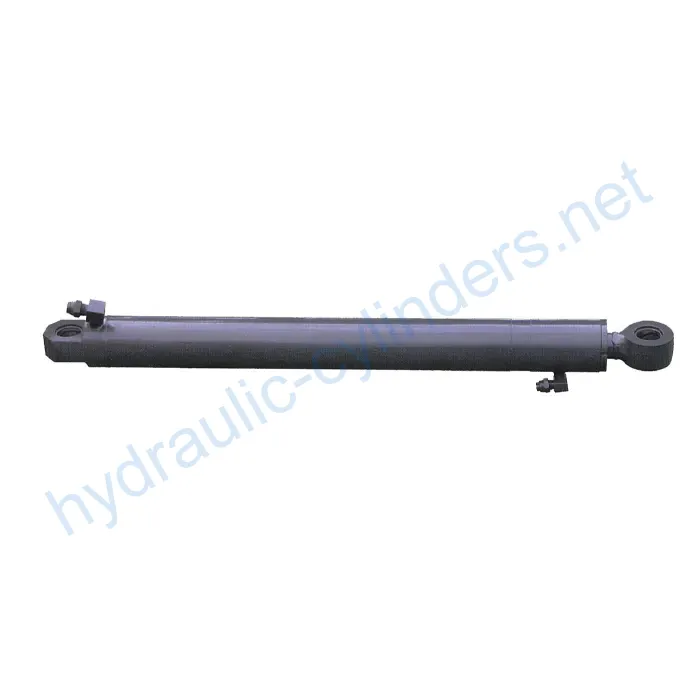Arm Cylinder For Zhenyu Small Excavator ZY260
Als één van de fabrikanten, de leveranciers en de exporteurs van van de hydraulische cilinders mechanische producten, bieden wij hydraulische cilinders en veel andere producten aan.
Neem contact met ons op voor meer informatie.
Mail:sales@hydraulic-cylinders.net
Fabrikant leverancier exporteur van hydraulische cilinders.
Arm Cylinder For Zhenyu Small Excavator ZY260
Definition and Explanation
The Arm Cylinder for Zhenyu Small Excavator ZY260 is a specially designed hydraulic cylinder that provides linear motion and power to the arm of various machinery, such as excavators, cranes, and robotic arms. The arm cylinder plays a crucial role in hydraulic systems, allowing for the effective movement and control of additional tools or attachments. These cylinders not only enable smooth motion but also withstand heavy loads, ensuring efficient operation and reliability in various working conditions.

Features
Highly Efficient Transmission
The arm cylinder provides powerful linear motion and force, ensuring high efficiency in the operation of the mechanical arm.
Precise Control
Through the hydraulic system, the arm cylinder enables precise motion control, making the operation of attached tools more flexible and accurate.
Strong Durability
The arm cylinder is typically manufactured using high-strength materials, offering excellent wear and corrosion resistance, making it suitable for long-term use in harsh environments.
Versatile Adaptability
These cylinders can be widely applied to various types of machinery, including excavators, cranes, and robotic arms, meeting different job requirements.
Easy Maintenance
Designed with ease of maintenance and replacement in mind, the arm cylinder allows for convenient periodic inspections and upkeep, minimizing equipment downtime.

Applications
The arm cylinder finds applications in various industries:
Construction Engineering
In excavators and cranes, the arm cylinder controls the movement of buckets or booms, facilitating earthmoving, material handling, and structural installation.
Manufacturing
In automated production lines, the arm cylinder enables the movement of robotic arms for processes such as assembly, welding, and material handling, enhancing production efficiency and precision.
Agricultural Machinery
In agricultural equipment like harvesters and seeders, the arm cylinder controls the motion of operating arms, performing tasks such as planting, fertilizing, and harvesting.
Mining
In mining equipment, the arm cylinder controls the arm movement of mining machinery, facilitating ore extraction and transportation.
Logistics and Transportation
In forklifts and handling robots, the arm cylinder controls the lifting and movement of forks, enabling material handling and stacking.
Design Considerations and Selection Criteria
When designing the arm cylinder, several key factors are considered:
Load-Bearing Capacity
The arm cylinder is designed to withstand the required load and force during operation to ensure safe and efficient performance.
Sealing
Various sealing components, such as piston seals and rod seals, are used to prevent leakage and ensure the proper functioning of the cylinder. These seals are made from wear-resistant materials such as polyurethane and nitrile rubber.
Durability
The cylinder body and threaded ends undergo precise processing to enhance wear resistance. Additionally, regular lubrication with hydraulic oil is necessary to maintain optimal performance.

Regular Inspection and Preventive Maintenance
To ensure the longevity and reliable operation of the arm cylinder, the following measures should be taken:
Regular Inspection
Periodically inspect the cylinder for any signs of wear, leakage, or damage. If any issues are detected, take appropriate action promptly.
Preventive Maintenance
Follow the manufacturer’s guidelines for maintenance, including lubricating the cylinder and replacing worn-out seals or other components as necessary.
Product Installation Guide
Proper installation of the arm cylinder is essential for optimal performance. Follow these steps:
- Prepare the installation area and ensure it is clean and free from debris.
- Position the cylinder in the desired location, aligning it with the mounting points on the machine.
- Securely attach the cylinder using appropriate fasteners and ensure proper alignment.
- Connect the hydraulic lines to the cylinder, following the recommended specifications and using suitable fittings.
- Check for any leaks and verify the cylinder’s functionality by performing a test operation.

Safety Considerations and Environmental Factors
When working with the arm cylinder, it is crucial to prioritize safety measures. By adhering to proper safety practices, the risk of accidents and injuries can be minimized.
Furthermore, considering environmental factors is important to ensure compliance with regulations and minimize any negative impact on the surroundings. Proper disposal of used hydraulic oil and recycling of cylinder components are essential for environmental responsibility.
Troubleshooting and Common Issues
When encountering issues with the arm cylinder, the following troubleshooting steps can help diagnose and resolve problems:
Issue: Leakage
Possible Causes: Damaged seals, loose connections.
Solution: Inspect and replace damaged seals, tighten connections.
Issue: Insufficient Power
Possible Causes: Low hydraulic pressure, worn-out components.
Solution: Check and adjust hydraulic pressure, replace worn-out components.
Issue: Abnormal Noise
Possible Causes: Loose parts, damaged internal components.
Solution: Tighten loose parts, inspect and replace damaged internal components.
By following these troubleshooting tips and preventive measures, potential problems can be minimized, ensuring efficient operation and performance.

Remember to organize the article logically, use subheadings for easy navigation, incorporate relevant images or charts to enhance understanding, and ensure the content is clear, concise, and suitable for readers with different levels of technical knowledge.
Author: lyl


Take a Tour of Our VR Factory:
Take a tour of our VR factory with the following
How Does Forklift Hydraulic Cylinder Work?
Hydraulic Cylinder Application:


